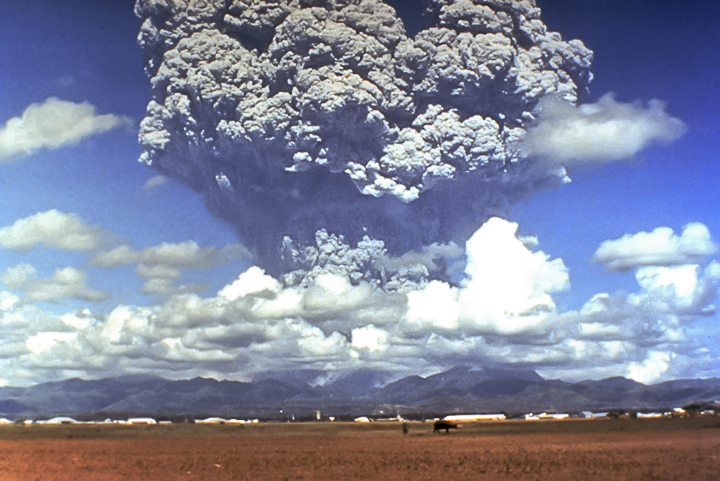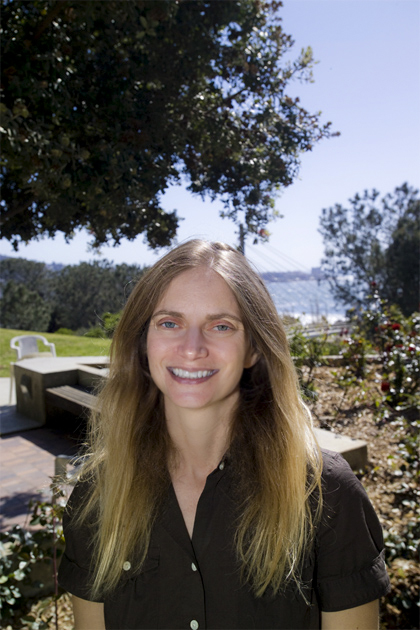By:
- Robert Monroe
Published Date
By:
- Robert Monroe
Share This:
Report: Geoengineering Plans Must Account for Ecosystem Impacts
As geoengineering planning becomes widespread, researchers note that little thought has been given to its potential effects on ecosystems

Scientists attempting to understand the potential effects of human geoengineering efforts often must rely on similar natural events to reach conclusions. The 1991 eruption of Mt. Pinatubo in the Philippines ejected 15 million tons of sulfur dioxide into the stratosphere, enough to cause cooling on a global scale as the particles caused greater reflection of solar energy away from Earth's surface toward space. Photo: USGS
Margaret Leinen recalls that when Nobel Prize-winning physicist Paul Crutzen wrote a 2006 essay exploring the feasibility of geoengineering, the late Stanford climatologist Stephen Schneider noted that in Crutzen, “the messenger was the message.”
After years of speculative musings about the efficacy of geoengineering, mostly taking place on the fringes of science, it took the gravitas of the Nobel laureate to legitimize the concept of altering nature to mitigate catastrophes caused by global warming.
“It’s gone way beyond that,” said Leinen, executive director of the Harbor Branch Oceanographic Institution in Florida. “Now, you’ve got governments talking about it, and that’s pretty serious.”

Lynn Russell, an atmospheric chemistry professor at Scripps Oceanography
Strategies to mitigate climate change by artificial means usually propose doing so either by making Earth brighter and, therefore, cooler or by removing human-generated carbon dioxide emissions by accelerating photosynthesis. They have been the subject of several Congressional hearings and at least one session of the English Houses of Parliament. But Leinen and Lynn Russell, a professor of atmospheric chemistry at Scripps Institution of Oceanography, UC San Diego, are among researchers who note that one major aspect of geoengineering scenarios has gotten short-shrift: what would global-scale geoengineering do to ecosystems?
Earlier this year, Scripps hosted a special workshop on the ecosystem effects of geoengineering, and this month, the two presented the conclusions of workshop participants at the American Geophysical Union’s Fall Meeting in San Francisco, the biggest annual event in Earth science.
The workshop summarized what is known about the feasibility of geoengineering and the type of research that will be necessary to understand its unintended consequences before any actual actions are taken by society.
“The hope would be that the work would make the community aware of these open questions and that people pursue these questions individually and collaboratively,” Russell added.
Sunlight reflection methods provide an example of such open questions. These methods involve attempts to reflect more sunlight back into space, therefore diverting that heat energy away from Earth’s surface. Some sunlight reflection method proposals call for the spreading of reflective sulfate aerosols into the upper reaches of the atmosphere, efforts that require a large investment from multiple countries.
But the workshop participants noted how little there is to go on when assessing what an aerosol injection would do to ecosystems. The few analyses done have used the nearest natural analog to artificial sunlight reflection: volcanic eruptions. Such studies have led scientists to expect that light would become more diffuse and possibly spur growth at the tops of forest canopies, but little else is understood about the relative effects of more diffuse light on other kinds of plants. There could also be unwanted changes to precipitation patterns and unintended depletion of atmospheric ozone that could damage ecosystems. The workshop scientists additionally pointed out that there have been no analyses done on the effects of aerosol injection on marine ecosystems, where photosynthesis can take place well below the surface of the ocean.
Russell, an aerosol expert, has calculated the lifetimes of atmospheric aerosols, which even in the stratosphere are much shorter than the decades-to-centuries lifetimes of greenhouse gases. She notes as an example of what could go wrong with geoengineering a scenario in which such efforts were initiated and then stopped for whatever reason. The abrupt reversion to less sun reflection could do more harm than good to ecosystems.
“Climate change would occur much more rapidly. There would be less time for ecosystems to react,” she said.
As geoengineering strategies evolve, researchers like Russell are continuing to conduct fundamental research that could help guide the design of such schemes. One proposed geoengineering approach uses the effects of aerosols on marine stratus clouds to offset greenhouse gas warming, just as the smokestack emissions from oceangoing vessels, commonly called “ship tracks,” have been doing already. Russell is a world expert on ship tracks, having studied their effects since 1994. In July 2011, Russell was chief scientist for the R/V Point Sur, where the Eastern Pacific Emitted Aerosol Cloud Experiment (E-PEACE) took advantage of the controlled conditions of marine stratus clouds to quantify the physical mechanisms that underlie this type of effect. While this was not a geoengineering experiment, the project showed that large organic particles from smoke also change cloud structure, Russell said.
“Improving our quantitative understanding of the indirect effects of aerosol particles on clouds is only one of the fundamentals that would be required before attempting geoengineering,” she said.
Share This:
Stay in the Know
Keep up with all the latest from UC San Diego. Subscribe to the newsletter today.



